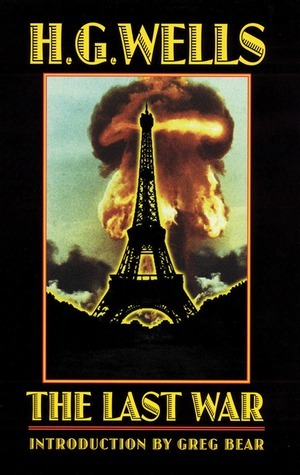
The Last War: A World Set Free
Book Description
Humanity stands on the brink of annihilation in a battle that could redefine existence itself. As nations crumble and alliances fracture, a desperate struggle emerges not just for survival, but for the soul of civilization. Technology becomes both a weapon and a savior, while ordinary lives hang in the balance, testing the limits of loyalty and love. As the shadows of war loom larger, old enemies must confront the ticking clock of their very futures. Will they choose destruction, or can a wary peace be forged amidst the chaos? The fate of the world is at stake—who will rise and who will fall?
Quick Book Summary
In "The Last War: A World Set Free," H.G. Wells envisions a near future ravaged by the emergence of atomic weaponry, where old political structures collapse under the weight of unprecedented destruction. The novel explores the cataclysmic impacts of technological innovation as world powers descend into relentless warfare, threatening the extinction of humanity. Yet, amidst the chaos, a new potential for unity emerges, pushing humankind to confront questions of morality, governance, and progress. As alliances fracture and civilization teeters, individuals are forced to navigate survival—clinging to hope, loyalty, and love in a shattered world. Ultimately, Wells offers a vision where catastrophe also paves the way for global reformation, suggesting that out of destruction may come an indomitable hope for peace.
Summary of Key Ideas
Table of Contents
The Double-Edged Sword of Technology
Atomic energy transforms the world, offering boundless potential before revealing its catastrophic power. Scientific innovation ushers in a new era, but political leaders, blinded by ambition and fear, weaponize atomic science, sparking conflicts of unimaginable scale. The unleashing of atomic bombs brings devastation to cities and forces governments to confront the overwhelming consequences of their actions. Wells uses this technological upheaval as both a warning and a possibility for human progress, questioning whether humanity can control the very inventions it creates.
Collapse and Rebirth of Civilization
The global society portrayed in the novel crumbles in the face of unending war. Governments collapse, economies fail, and millions are displaced. The old world order—its politics, traditions, and borders—proves unable to withstand the magnitude of modern destruction. Out of the rubble, new voices arise, advocating for systemic change and the rejection of violence as a means of settling disputes. This collapse becomes both a tragedy and a chance for rebirth, emphasizing the necessity of collective action in times of crisis.
The Moral Cost of War
Wells probes the ethical implications of mass destruction, focusing on the personal and societal trauma caused by atomic warfare. Characters grapple with the guilt and horror accompanying new weaponry, while survivors struggle to preserve their humanity amidst devastation. The narrative delves into the frailty of moral compasses when survival is at stake, ultimately questioning whether civilization can endure without confronting its deepest ethical failings.
The Search for Global Unity
Amid the ruins, unlikely leaders and visionaries champion global unity. Recognizing that perpetual conflict endangers everyone, various nations attempt to establish a new world order rooted in cooperation and shared responsibility. Wells explores the blueprint for international governance, suggesting that peace can only be forged through mutual understanding, dialogue, and a shared commitment to progress. The novel paints unity not as an ideal, but as an existential necessity arising from humanity's collective brush with extinction.
Individual Lives Amid Catastrophe
Personal stories are interwoven with the epic scale of conflict, highlighting how war tests the boundaries of loyalty, compassion, and love. Ordinary individuals are forced to make extraordinary choices, often risking everything for family, ideals, or hope for the future. These intimate narratives humanize the broader arc of civilization's downfall and resurrection, reminding the reader that history is shaped as much by single lives as by sweeping events. The resilience of the human spirit persists even as the world is remade.
Download This Summary
Get a free PDF of this summary instantly — no email required.





